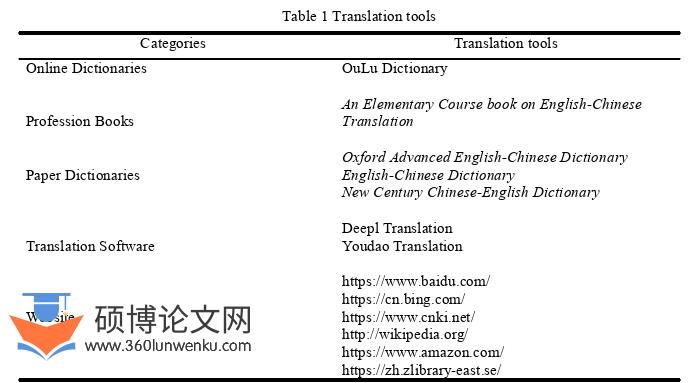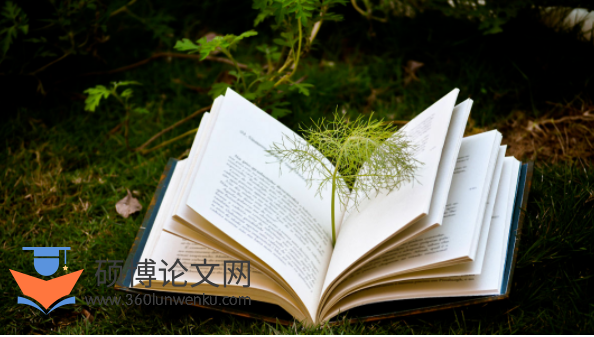本文是一篇英语论文,本研究在交际翻译理论的指导下,综合运用各种翻译方法和技巧,解决翻译实践中遇到的困难,不拘泥于原文的句式结构,准确传达源文本的信息,根据英汉两种语言的特点,充分考虑目标语读者,符合目标语读者的阅读习惯,增强译文的可读性,从而达到交际翻译的目的。
Chapter 1 Task Description
1.1 Selection of Stories I Might Regret Telling You
After much selection,Stories I Might Regret Telling You was finally chosen as thesource text.The book’s title is catchy and makes the readers wonder what the authorregrets telling.Although the author of the book is a singer,she and her family are veryfamous in the Canadian music industry.In the text,the author reveals the most real sideof herself to everyone,telling her life experience from childhood to adulthood.Thetranslation of the book will arouse readers’interest in foreign artists and be welcomed byreaders,making the Chinese readers broaden their horizons and realizing culturalexchange between China and the West.
Secondly,the translator herself is interested in music and wants to know what goeson behind the scenes of a successful singer.And the translator gradually gets to know theauthor in the process of reading,from which she gets a lot of insights and inspirations,such as facing home and family,cherishing them,as well as the courage towards ideals.By translating this book,translator hopes more people can read it and get moreenlightenment and confidence from it.
Thirdly,after checking the materials by using some websites such as CNKI,Wikipedia Database etc.,the translator finds that there is no Chinese version in Chinawhich meets the requirements for practice reports.

英语论文怎么写
..........................
1.2 Analysis of the Source Text
This chapter is the description of the source text,which is divided into two parts.Tostart with,the translator gives a brief account of the author’s family background and lifecareer.In addition,the literary form of the source text is analyzed in the latter part.
1.2.1 Introduction to the source text
Stories I Might Regret Telling You is a memoir created by Martha Wainwright,aCanadian singer and songwriter.Published in 2022,the book consists of 18 chapters.Thetranslator selects the first two chapters as the source text on the basis of practical needs.
Stories I Might Regret Telling You is a thoughtful and moving book about theremarkable life of one of the most talented singers in music today.This memoir recordsher life.She describes her arduous journey from an awkward,sincere,rebellious daughterto a mature artist and mother.From birth,Martha grew up in a world filled withincomparable musical legends,embracing music.Later,she had a bitter rivalry with herbrother,Rufus,and eventually made up,embraced and understood each other.Throughexperience,she has had great success in music.In 2005,she released her criticallyacclaimed debut album,Martha Wainwright,containing the blistering hit,Bloody MotherFucking Asshole,which the Sunday Times called one of the best songs of that year.Thatrelease,and the albums that followed,such as Come Home to Mama and I Know You’reMarried But I’ve Got Feelings Too,showcase Martha’s searing songwriting style andestablish her as a powerful voice,but the pain of losing her mother broke her heart.Finally,with candor and grace,Martha writes about her own experience of becoming amother as she finally understands and confronts the challenges of being a female artistwith a child.
.................................
Chapter 2 Theoretical Framework
2.1 An Overview of Communicative Translation Theory
Peter Newmark is a famous English linguist,translation theorist and educationalist.Approaches to translation(1981),published by Peter Newmark,is a collection of essayson translation theory and practice.In this book,he puts forward the new concepts ofsemantic translation and communicative translation,which are influential in moderntranslation theory.The theory of semantic translation requires that the translation must bein close connection with the source text in terms of structure and word order arrangement,and try to strive to be faithful to the source author’s linguistic characteristics andexpression within the scope of the source culture(Yuan,2003).The theory ofcommunicative translation focuses on the target language readers,and it emphasizes thatthe translation should give the readers of the translated language the same feeling that thereaders of the source language have when they read the source text(Ding,2016).That isto say,the focus of communicative translation is to convey information according to thelanguage,culture and pragmatics of the target language,rather than copying the text ofthe source text as faithfully as possible.Translators have more freedom in communicativetranslation to interpret the source text,such as adjusting the style,removing ambiguitiesand even correcting the source author’s mistakes(Zhang,2022).
In Newmark’s view,semantic translation and communicative translation each havetheir own strengths and weaknesses,and the difference between them is thatcommunicative translation focuses on the target language readers and tries to removereading or communicative difficulties and obstacles for these readers,so as to make thecommunication go smoothly.In semantic translation,the translator still takes the sourcetext as the basis and sticks to the position of the source language culture,only explainingthe meaning of the source text and helping the target language readers to understand the meaning of the text(Newmark,2001).
.................................
2.2 Application of Translation Theory
Memoir texts emphasize authenticity and literariness,among which authenticity isthe biggest feature of memoir texts.The translated text should accurately convey theoriginal information,and the translated language should be natural and conform to thelanguage habits of Chinese readers,which is consistent with the guiding principles ofcommunicative translation theory.Moreover,many similar texts,such as The GlassCastle and Angela’s Ashes,use communicative translation theory to guide translationpractice,with remarkable results.Therefore,translator chooses to use communicativetranslation theory to guide translation practice.
As mentioned above,Stories I Might Regret Telling You is a memoir that chroniclesthe author’s experiences.When translating this kind of text,the translator’s primary goalis to convey the information of the source text to the target language readers in a fluent,clear and conventional way,so that the target language readers can get the same feelingas the source language readers do,which is actually in line with the standards ofcommunicative translation theory.From the perspective of words,there are manypolysemous words in the source text,and the translator needs to distinguish the meaningof these words and translate them according to the context,and there are also manyculture-loaded words in the source text,and the translator has to flexibly utilize all kindsof translation techniques to make the target readers understand the meaning of the words,and to convey the information in a way that is in line with their cultural cognition andreading habits.
..............................
Chapter 3 Translation Process .......................... 8
3.1 Pre-translation Preparations ........................ 8
3.2 While-translation Process .................................. 10
3.3 Post-translation Modification ...................... 10
Chapter 4 Case Analysis ........................ 11
4.1 At the Lexical level ................................ 11
4.1.1 Polysemy ...................................... 11
4.1.2 Culture-loaded words .......................... 14
Chapter 5 Conclusion ......................... 29
5.1 Gains ...................................... 29
5.2 Limitations .................................. 30
Chapter 4 Case Analysis
4.1 At the Lexical level
English belongs to the Indo-European language family and Chinese belongs to theSino-Tibetan language family,and these two languages are very different in bothgrammatical structure and expression habits(Liu,2007).Therefore,word-for-wordtranslation should be avoided.The translator uses appropriate translation techniques totreat polysemous words and culture-loaded words in the source text,with the aim to makethe meaning of the source text conveyed and transformed effectively to ensure that thetranslation is acceptable to the target readers.
4.1.1 Polysemy
Polysemous words have three criteria:1)They have two or more related meanings;2)These meanings correspond to the same linguistic forms;3)The language formbelongs to the same morphosyntactic category(Ou,2012).Therefore,it’s very importantto choose the appropriate word meaning.The translation of polysemous words or phrasesis difficult in practice.If the meanings of words are chosen directly from dictionarieswithout considering the context of the source text,inappropriate translation andambiguity will occur.To make the translation of polysemy more understandable andsmooth for the target readers,the translator employs the translation techniques of dictionand meaning extension to deal with it.

英语论文参考
..................................
Chapter 5 Conclusion
5.1 Gains
Through this translation practice,the translator has mastered a great deal oftranslation techniques and relevant background knowledge.At the same time,thetranslator’s translation ability and comprehension have been greatly improved.All in all,the translator believes that before translating a text,it is necessary for the translator tohave a thorough understanding of the source text.In the process of translation,it issignificant to have an in-depth understanding of the relevant background knowledge andchoose appropriate translation techniques and methods.
First of all,the translator sorts the text types of the source text,reads through thesource text and understands the cultural background knowledge of the source and targetlanguage countries,which lays solid foundation for future translation.Aiming to theunique characteristics of the memoir text,the translator chooses the theory ofcommunicative translation to guide the whole translation process because it is instructivefor the similar text.
Secondly,the translator has a systematic understanding of the communicativetranslation theory,and under the guidance of the communicative translation theory,shehas solved many difficulties encountered in the translation process.At the lexical level,many polysemous and culture-loaded words are encountered,the translator uses thetranslation skills such as word selection,word derivation,convention and in-textannotation to make the translation more fluent and easy to understand.At the syntacticlevel,many long and difficult sentences and passive voice appeared,reorganization,sequence adjustment,splitting,combined translation and morphological conversion canbe employed to make the translated text more in line with the Chinese syntactic structureto reduce the reading difficulty of the target language readers and to enhance the targetlanguage readers’reading perception.At the text level,to restore the articulation and coherence in the source text,the translator uses reference,conjunction and omission asthe corresponding articulation means to realize the semantic coherence of the source text,and realize the articulation and coherence of the translated text through the translationtechniques of addition and omission.
reference(omitted)
